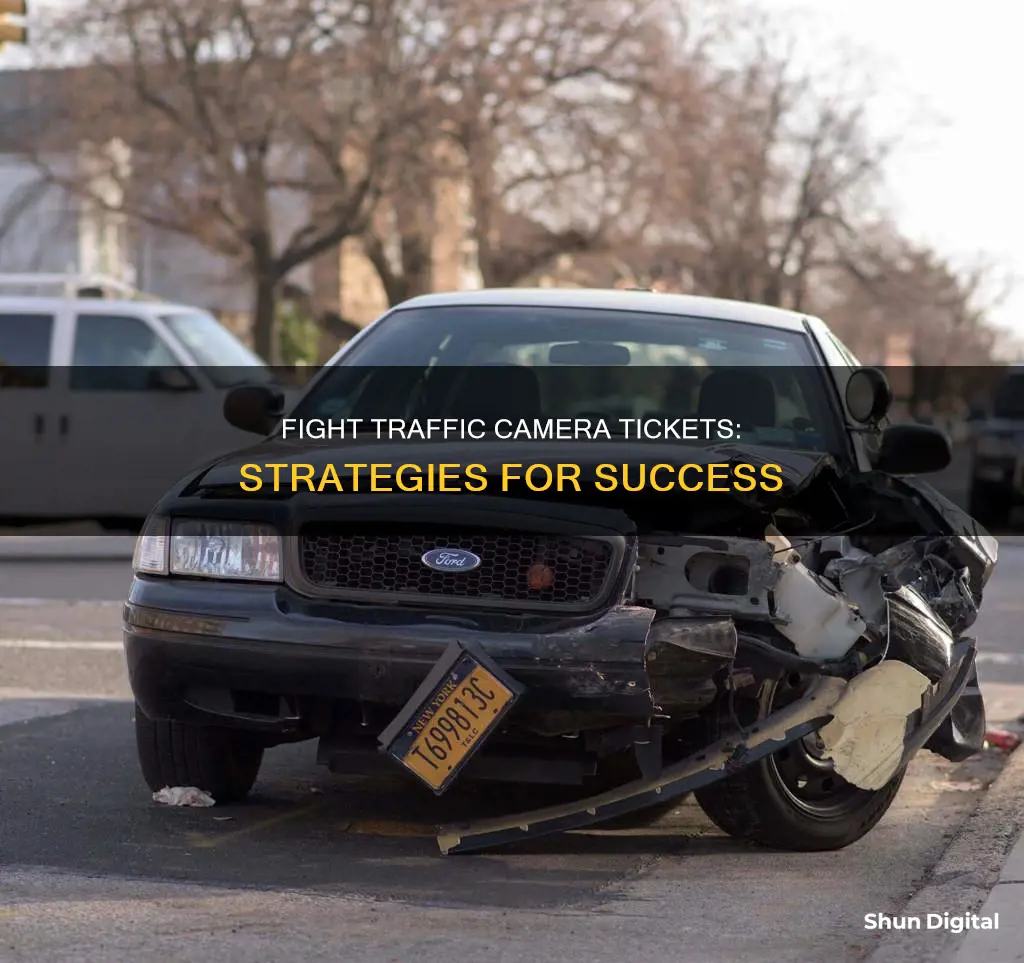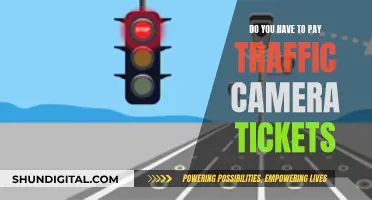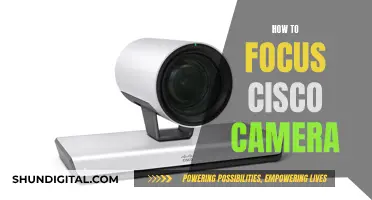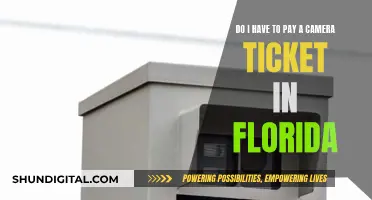
Getting a traffic ticket is never fun, especially when it's unexpected. However, disputing a traffic camera ticket may be easier than you think. The first step is to examine your ticket and check the date, time, and location. It's important to note that camera tickets are usually sent to the owner of the car, not the driver, so make sure you were actually driving the car when the ticket was issued. You should also review any photos or videos included with the ticket to confirm that it's your car and that the footage is clear. If the license plate isn't clearly visible, it may be difficult to prove that the car is yours. Knowing the specific law you're accused of violating and researching relevant cases in your city or county can also help you build a legal defense. For example, some states have specific rules about warning signs that must be posted near traffic lights, and if these signs were missing or obscured, you may have a valid defense. Additionally, some states recognize a necessity defense for speeding, so if you were speeding to get to the hospital, for example, this could be a valid argument. Finally, remember that it's the prosecution's burden to prove each element of your violation—you're not responsible for proving your innocence.
| Characteristics | Values |
|---|---|
| Check ticket details | Check the date, time, and location of the ticket. Confirm you were driving the car when the ticket was issued. |
| Understand the law | Make note of the code section you're cited for violating. Understand the elements and penalties for violation. |
| Review evidence | Check the photos and videos for clarity and identifiable details. Request copies of evidence if not provided. |
| Plead not guilty | Respond by mail, online, or in-person within the deadline. Do not pay the fine if this is considered an admission of guilt. |
| Request a hearing | Demand a full formal hearing or trial. Attend any required hearings such as pre-trial or mediation. |
| Gather evidence | Request documents from law enforcement, including maintenance records for the camera and traffic light/speed system. |
| Research defences | Look for cases and appellate court decisions on traffic cameras in your city or county. Identify recognised defences, such as warning sign requirements or necessity defences. |
| Present your case | Arrive at the hearing with copies of your evidence. Treat courthouse staff with respect and present your defence calmly. |
| Challenge evidence | Dispute the admissibility of photographs as hearsay. Assert your right to confront witnesses and challenge the authenticity of the evidence. |
| Raise defences | Argue that the prosecution cannot prove you were driving or that the traffic light/speed detection system was functioning properly. |
What You'll Learn

Plead not guilty and request a formal hearing
If you want to dispute a traffic camera ticket, you must plead not guilty and request a formal hearing. Here's a step-by-step guide on how to do this:
Step 1: Plead Not Guilty by Mail or Online
Some jurisdictions allow you to respond to the citation by mail or online, especially for less serious traffic violations like speeding or running a red light. Check your citation and your local laws to see if this option is available to you. Remember to plead not guilty before the deadline, which is typically within 30 days of receiving the ticket.
Step 2: Appear at Arraignment
If you cannot plead by mail or online, you must appear in traffic court and plead not guilty in person. This initial court appearance is called an arraignment, and it is crucial that you show up on the date and time listed on your citation. At the arraignment, you will have the opportunity to formally plead not guilty and request a full hearing or trial.
Step 3: Request a Formal Hearing or Trial
When you plead not guilty, demand a full formal hearing or trial. This is your right, and it is an important step in disputing your traffic camera ticket. Keep in mind that you may also be required to attend other hearings, such as pre-trial hearings or mediation sessions. Make sure to attend all mandatory hearings and maintain your request for a full dismissal of your traffic camera ticket.
Step 4: Research Applicable Laws
While you are waiting for your hearing, take the time to research the laws and precedents related to traffic cameras in your city, county, and state. Look for cases where traffic camera tickets have been successfully disputed, and check for any appellate court decisions that have ruled on the legality of these tickets. Understanding the relevant laws and precedents will help you build a strong legal defense.
Step 5: Gather Evidence and Prepare Your Defense
In addition to researching the law, you should also gather any evidence that can support your defense. For example, if there are specific requirements for warning signs near traffic cameras, you may want to collect photos or other evidence showing that these signs were obscured or missing. If there are maintenance records for the camera or traffic light system, request those as well, as they can help establish the reliability (or lack thereof) of any photo or video evidence.
By following these steps and staying informed about your rights, you can effectively plead not guilty and request a formal hearing to dispute a traffic camera ticket. Remember to stay organized, respectful, and professional throughout the process, and don't be afraid to assert your legal rights and challenge the evidence presented against you.
Surveillance Camera Motion Triggers: Understanding the Science
You may want to see also

Argue that the photo is unclear
Arguing that a photo is unclear is a common defense for fighting a traffic camera ticket. Here are some tips on how to do this effectively:
- Review the photos and videos that were taken by the traffic camera. Look for any signs of blurriness or lack of clarity in the images. If the license plate or the driver is not clearly visible, it may be challenging to confirm that the vehicle in question is yours.
- In some states, you can submit an affidavit swearing that you were not the one driving the vehicle when the violation occurred. This can often result in the dismissal of the ticket.
- Understand the specific laws and regulations regarding traffic camera tickets in your state. For example, some states require clear signage to inform drivers about the presence of red light cameras. If these signs are missing or do not comply with legal standards, it may provide a viable defense.
- Request maintenance and calibration records for the camera. Inconsistencies or malfunctions in these records could challenge the validity of the ticket.
- Consult with a traffic attorney who can guide you through the legal process and help you build a strong defense. They may be able to identify additional technical requirements or potential errors in the evidence that can be used in your favor.
Computer Camera Showing Red: What's the Issue?
You may want to see also

Argue that the prosecution can't prove you were driving
If you are the owner of the car, but you were not driving when the ticket was issued, you may be able to argue that the prosecution cannot prove you were driving. In most states, it is the driver, not the owner of the vehicle, who is liable for the violation. In these cases, many states allow owners to submit an affidavit stating that they were not driving when the violation occurred, which will usually result in the dismissal of the ticket.
Even if you were driving, you can still argue that the prosecution cannot prove it was you. If the photo included with your ticket is blurry and does not clearly show you in the driver's seat, this may be a valid defence. You will be under oath, so you cannot lie and say you were not driving if you were, but you can argue that the prosecution has no evidence that you were driving. This defence will only work in jurisdictions that require tickets to follow the driver, not the registered owner of the car.
In some jurisdictions, such as Broward County, Florida, a red-light camera photo is considered hearsay. Hearsay is an out-of-court statement presented in court to prove the truth of the matter asserted. In this case, the photo is an out-of-court "statement" that the prosecution is attempting to use to prove you violated the traffic law. Hearsay evidence is generally inadmissible, so you may be able to get your ticket dismissed on these grounds.
Charging Cameras on 'Alone': Powering the Ultimate Survival Show
You may want to see also

Argue that the camera wasn't calibrated correctly
To argue that a traffic camera was not calibrated correctly, you can request the camera's maintenance records. If the camera's accuracy was not tested within a short period before your ticket was issued, the photo may be unreliable as evidence.
In the case of a speeding ticket, you can also request the maintenance records for the camera and the speed monitoring system. If their accuracy was not recently tested, the evidence may be deemed unreliable.
You can also argue that the prosecution cannot prove you were speeding. For example, if the camera only captured a few seconds of the violation, this may be more difficult for the prosecution to prove.
It is important to note that the burden of proof is on the prosecution to prove each element of your violation. You do not have to prove that you didn't do it.
Focusing Your GoPro: Tips for Crisp, Clear Shots
You may want to see also

Argue that the ticket was served incorrectly
If you receive a traffic camera ticket, it's important to act quickly. Ignoring it could lead to high fines or even arrest. The first step is to examine your ticket. Check the date, time, and location, and confirm that you were indeed driving the car when the ticket was issued. You should also make a note of the exact code section you're cited for violating and review any photos included with your citation. If there are no photos, you may need to request them from law enforcement.
When it comes to arguing that the ticket was served incorrectly, there are a few things to consider:
- Service of Process: This refers to the procedure through which the state provides a driver with formal notice of a photo radar ticket. There are rules governing how the state may accomplish this, and if they fail to follow these rules, it may be possible to get the case dismissed. For example, if you are not served within 90 days of your ticket being filed with the court and you do not waive service, your case should be dismissed.
- Types of Service: Personal service involves a licensed process server delivering a copy of the ticket to the defendant at their residence. Substitute service means that the ticket is delivered to someone of suitable age and discretion who lives with the defendant. Alternative service is used when standard means of service have proven impracticable and involves mailing a copy of the ticket, posting it to the defendant's front door, and/or posting it to the defendant's garage door.
- Waiver of Service: If you mail anything back to the court about your ticket, request defensive driving school, or make a physical appearance at court, you may waive your right to argue that you were not served correctly. Some courts have also considered a phone call a waiver of service.
If you believe you were not served correctly, it is important to speak with an attorney. They can help you determine if you have a legitimate argument and advise you on the best course of action. In some cases, waiting for service and then taking defensive driving school may be the best option.
Cleaning Surveillance Camera Domes: Maintaining Clear Vision
You may want to see also
Frequently asked questions
Check the ticket for the date, time, and location of the violation. Confirm whether you were driving the car at the time, as some states require that the driver, rather than the owner of the car, is liable for the violation. If you were not driving, you may be able to submit an affidavit swearing that you were not driving, which may result in the dismissal of the ticket.
Review the photos and videos of the violation, if provided, to confirm that your car is clearly identifiable. Check the relevant state law pertaining to traffic camera tickets, as the available defences depend on what the law says. For example, if warning signs for cameras are required at the intersection where you received the ticket, but none were present, you may have a valid defence.
Plead not guilty by responding to the citation by mail, online, or in person at a live arraignment, depending on the jurisdiction. Request a formal hearing and conduct research to build a legal defence. Present your case at the hearing, using any evidence to support your claim.







